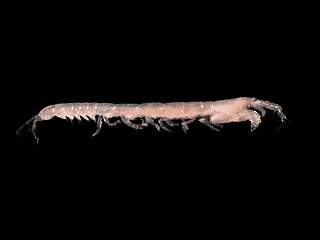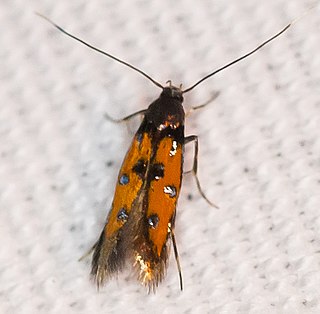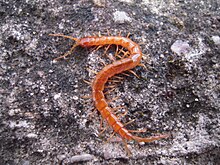
The cave bear is a prehistoric species of bear that lived in Europe and Asia during the Pleistocene and became extinct about 24,000 years ago during the Last Glacial Maximum.

Pseudoscorpions, also known as false scorpions or book scorpions, are small, scorpion-like arachnids belonging to the order Pseudoscorpiones, also known as Pseudoscorpionida or Chelonethida.

The long-tailed vole, in some areas known as the San Bernardino long-tailed vole, is a small vole found in western North America. They have short ears and a long tail. Their fur is gray brown with light gray underparts. They are around 18 cm (7.1 in) long with an 8 cm (3.1 in) tail and weigh about 50 g (1.8 oz).

The grove snail, brown-lipped snail or Lemon snail is a species of air-breathing land snail, a terrestrial pulmonate gastropod mollusc.

The crustacean order Tanaidacea make up a minor group within the class Malacostraca. There are about 940 species in this order.

The giant house spider has been treated as either one species, under the name Eratigena atrica, or as three species, E. atrica, E. duellica and E. saeva. As of April 2020, the three species view was accepted by the World Spider Catalog. They are among the largest spiders of Central and Northern Europe. They were previously placed in the genus Tegenaria. In 2013, they were moved to the new genus Eratigena as the single species Eratigena atrica. In 2018, the three separate species were restored. The bite of these species does not pose a threat to humans or pets, and they are generally reluctant to bite, preferring instead to hide or escape.
Movile Cave is a cave near Mangalia, Constanța County, Romania discovered in 1986 by Cristian Lascu a few kilometers from the Black Sea coast. It is notable for its unique groundwater ecosystem abundant in hydrogen sulfide and carbon dioxide, but low in oxygen. Life in the cave has been separated from the outside for the past 5.5 million years and it is based completely on chemosynthesis rather than photosynthesis.

The European nightcrawler is a medium-small earthworm averaging about 1.5 g when fully grown. Generally blueish, pink-grey in color with a banded or striped appearance, the tips of their tails are often cream or pale yellow. When the species has not been feeding, it is pale pink. The species is usually found in deep woodland litter and garden soils that are rich in organic matter in European countries. D. hortensis is sold primarily as a bait worm, but its popularity as a composting worm is increasing.

Carabus hortensis is a species of beetle in the Oreocarabus subgenus which can be found throughout Europe but is rarer in the extreme southwest. It is common in the Middle East.

Chrysoclista linneella, is a moth of the family Agonoxenidae found in Europe and North America.

Coleophora ornatipennella is a small moth of the family Coleophoridae.

Nepa is a genus belonging to the family Nepidae, known as water scorpions. There are six species found in freshwater habitats in the Northern Hemisphere.

Julida is an order of millipedes. Members are mostly small and cylindrical, typically ranging from 10–120 millimetres (0.39–4.72 in) in length. Eyes may be present or absent, and in mature males of many species, the first pair of legs is modified into hook-like structures. Additionally, both pairs of legs on the 7th body segment of males are modified into gonopods.

The lesser mouse-eared bat or lesser mouse-eared myotis is a species of insectivorous bat in the family Vespertilionidae.

The Cryptopidae are a family of scolopendromorph centipedes. Cryptopids are blind and possess 21 pairs of legs. The genus Cryptops is the numerically largest in the family, comprising over 150 species worldwide.

Kryptonesticus is a genus of European scaffold web spiders first described by Pavlek & Ribera in 2017, based around the newly-described type species Kryptonesticus deelemanae and seven species transferred from genus Nesticus. In 2018, an additional species, K. georgescuae, was described from two female specimens from Romania.

Cryptops anomalans is a centipede in the genus Cryptops that is mainly distributed in Europe. It can reach a length of 50 millimeters and is one of the largest species of this genus. Cryptops anomalans can easily be confused with its two Central European congeners C. hortensis and C. parisi. However, it can be identified through the characteristic ‘X’ suture on the first tergite.

Cryptops sometimes known as cave centipedes, is a centipede genus in the family Cryptopidae; species records have a world-wide distribution.
















